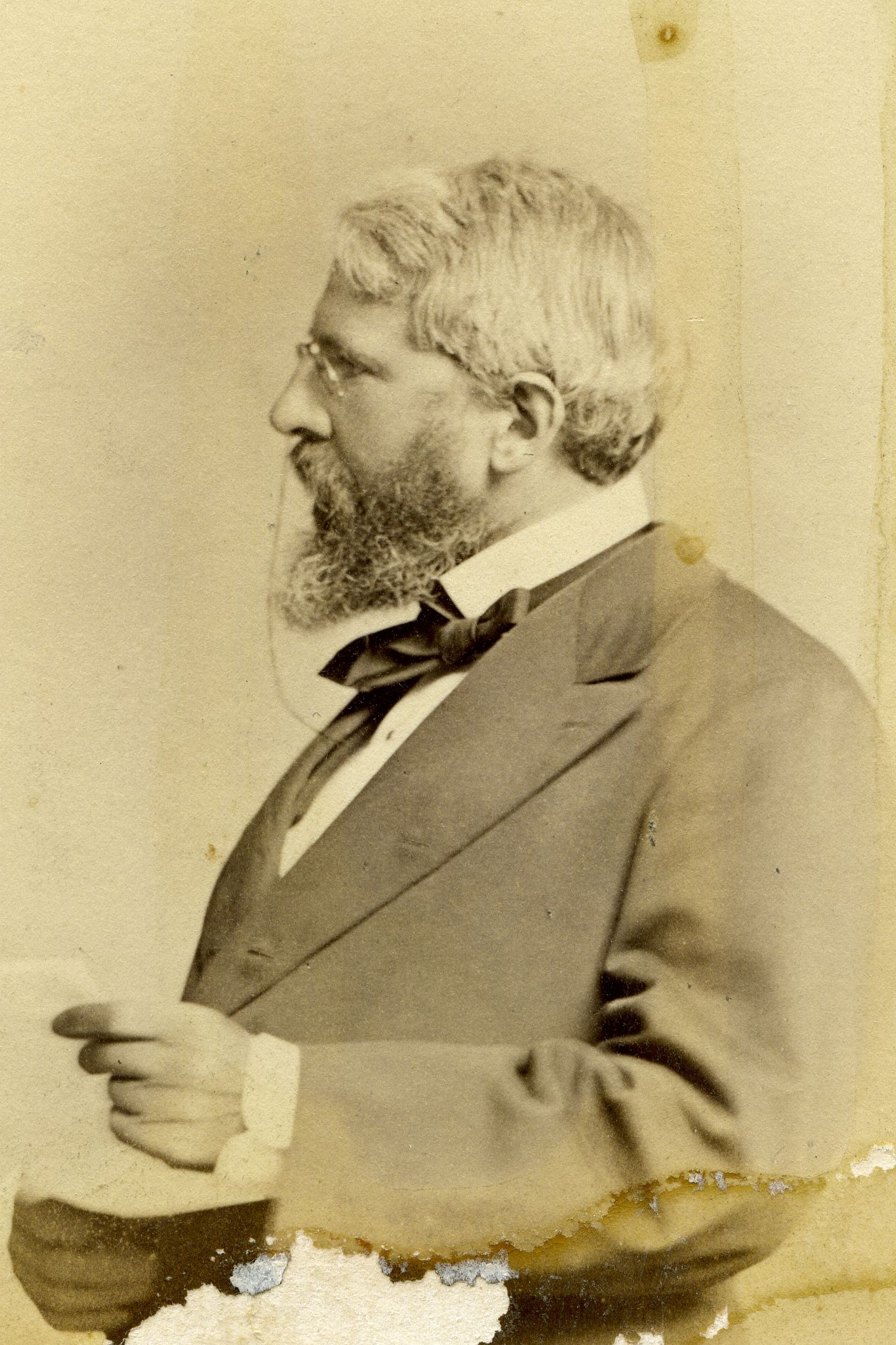Member Directory,
1847 - 1922
C. Grant La Farge
Architect
Centurion, 1892–1938
Russell Sturgis and Clarence King
Newport, Rhode Island
Saunderstown, Rhode Island
Age thirty

Archivist’s Notes
Son of John La Farge; nephew of George L. Heins; brother of Bancel La Farge, John La Farge, and Oliver H. P. La Farge; father of Christopher La Farge and Oliver La Farge; uncle of L. Bancel La Farge and Thomas La Farge
Century Memorial
During his forty-six years of membership in the Century, Christopher Grant La Farge, architect, was a familiar and welcome figure in the dining-room, the billiard room, not to mention the numerous talking rooms of the club-house. If he had a lecture on architecture or an article on fishing or big-game hunting to write, he was likely to bury himself in the Club library. When revels were afoot he was sure to be present. In his sixty-fifth year, he played at the Century the part of Rembrandt’s young wife, Saskia, in Centurion Henry W. Jessup’s “anachronistic comedy,” “The Real Rembrandt.” Even without the aid of Roland Young’s skilful work with grease paint, pigment, and mascara, the charming Saskia would have been the hit of that memorable evening of 1926.
As a boy of fourteen Grant was an assistant to his father, John La Farge, in interior decorating, and later studied architecture at the Massachusetts Institute of Technology and in the office of H. H. Richardson of Boston. With his partner, the late George L. Heins, Centurion, he won the international competition for the design of the Cathedral of St. John the Divine, but on the death of Heins was superseded by another architect, with a quite different design. During the subsequent newspaper controversy, La Farge made no public comment. A former partner of his describes him as “a charming person, with a keen and cultivated mind, a wide reader of retentive memory, a fluent talker, a self-confident speaker and writer. He was very fond of the wild life—hunting, fishing, and riding. These characteristics brought him into contact, particularly during his younger days, with men of like tastes, such as Theodore Roosevelt and Owen Wister. Grant was a good designer, particularly of masses of construction, and keen about color—vivid and bright—no pastel shades for him! He reveled in the use of mosaic, tile, marble, and glass. My association with him I look back upon with a pleasurable glow of satisfaction. His standards were high and he enjoyed life, with close friends of distinguished position here and abroad. He did not permit his misfortunes to embitter him. He was an ornament to his profession.”
Geoffrey Parsons
1938 Century Memorials
Related Members
Member Directory Home-
 Charles EwingArchitectCenturion, 1917–1954
Charles EwingArchitectCenturion, 1917–1954 -
 Rowland G. HazardManufacturerCenturion, 1904–1918
Rowland G. HazardManufacturerCenturion, 1904–1918 -
 George L. HeinsArchitectCenturion, 1893–1907
George L. HeinsArchitectCenturion, 1893–1907 -
 Clarence KingGeologist/Surveyor/AuthorCenturion, 1874–1901
Clarence KingGeologist/Surveyor/AuthorCenturion, 1874–1901 -
 Bancel La FargeArtistCenturion, 1894–1938
Bancel La FargeArtistCenturion, 1894–1938 -
 John La FargeArtistCenturion, 1860–1910
John La FargeArtistCenturion, 1860–1910 -
 Henry Clapp SmithPublisherCenturion, 1922–1974
Henry Clapp SmithPublisherCenturion, 1922–1974 -
 Russell SturgisArchitect/AuthorCenturion, 1870–1909
Russell SturgisArchitect/AuthorCenturion, 1870–1909


